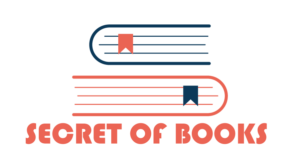Modern technology is causing traditional teaching techniques to change quickly. The Smart Board is one such innovation that has transformed classrooms all around the world. Modern features on this interactive whiteboard make teaching and learning more dynamic, interesting, and effective. In this post, we’ll look at the many advantages of adopting Smart Boards in the classroom and how they’re changing the way people learn.
Learning that is Interactive:
Smart boards offer an engaging learning environment that encourages active engagement from students. Teachers may easily navigate through a variety of multimedia resources, presentations, and educational apps thanks to touch-sensitive screens and straightforward controls. Students can also take notes, work out difficulties, and engage in group projects while interacting directly with the board. This practical method encourages learners to think critically, be creative, and solve problems.
Integration of multimedia
Smart Boards’ seamless integration with multimedia information is one of their main benefits. Videos, photos, animations, and audio files are simple to integrate into a lesson plan by a teacher, making difficult subjects more approachable and interesting. The colorful presentations are advantageous for visual learners, while the audio-enhanced materials are advantageous for auditory learners. The utilization of multimedia tools helps students learn more, retain information better, and brings concepts to life, making learning more engaging and effective.
Collaboration in real-time:
Real-time cooperation between teachers and students is made possible via smart boards. These interactive boards make sharing and exchanging information quick and easy thanks to their internet connectivity. Students can brainstorm ideas, collaborate on group projects, and present their work live on the Smart Board. This cooperative method helps students develop their teamwork, communication, and problem-solving abilities while preparing them for the challenges of the digital age.
Organizing and taking notes digitally:
The era of sloppy whiteboard markers and chalkboards is over. Teachers and students can take digital notes right on the board using smart boards. These notes can be easily shared, revised, and stored, which encourages organization and lessens paper waste. Teachers can review earlier lessons, consult saved annotations, and provide students immediate feedback. The teaching process is streamlined and knowledge transmission is made possible by this digital integration.
Learning That Changes:
In order to meet the varied demands and learning preferences of students, smart boards allow adaptive learning approaches. Lessons can be altered by teachers to meet the needs of each student, enabling personalized instruction. Smart Boards’ interactive features can accommodate various ability levels, guaranteeing that students are given the right level of challenge. By enabling students to learn at their own pace, this adaptability fosters a supportive and welcoming learning environment.
Review and comments:
The evaluation process is improved by the use of smart boards, which provide real-time evaluation and feedback. To quickly determine the level of student understanding, teachers can build interactive tests and polls. The Smart Board’s quick response enables prompt intervention and focused instruction. Teachers can also monitor pupils’ development, spot areas for growth, and adjust their instruction accordingly. This data-driven strategy encourages lifelong learning and academic advancement.
Benefits to the environment and costs:
Smart Boards offer long-term cost reductions even though upfront investments could be necessary. Traditional teaching tools like paper, markers, and transparencies are no longer required, which lowers ongoing costs. In addition, Smart Boards reduce paper waste, which helps the environment. Teachers no longer require printed materials because there is a variety of educational content easily accessible to them via digital platforms.
Conclusion:
By encouraging interactive learning, incorporating multimedia, encouraging collaboration, and facilitating adaptive education, smart boards have revolutionized the teaching environment. These engaging tools raise student engagement, boost academic results, and provide students with the skills they need to succeed in the digital age. Smart Boards are unquestionably a game-changer in the educational space because of their capacity to produce an engaging and immersive learning environment. By embracing this technology, educators and students can thrive in the classroom to new heights.

